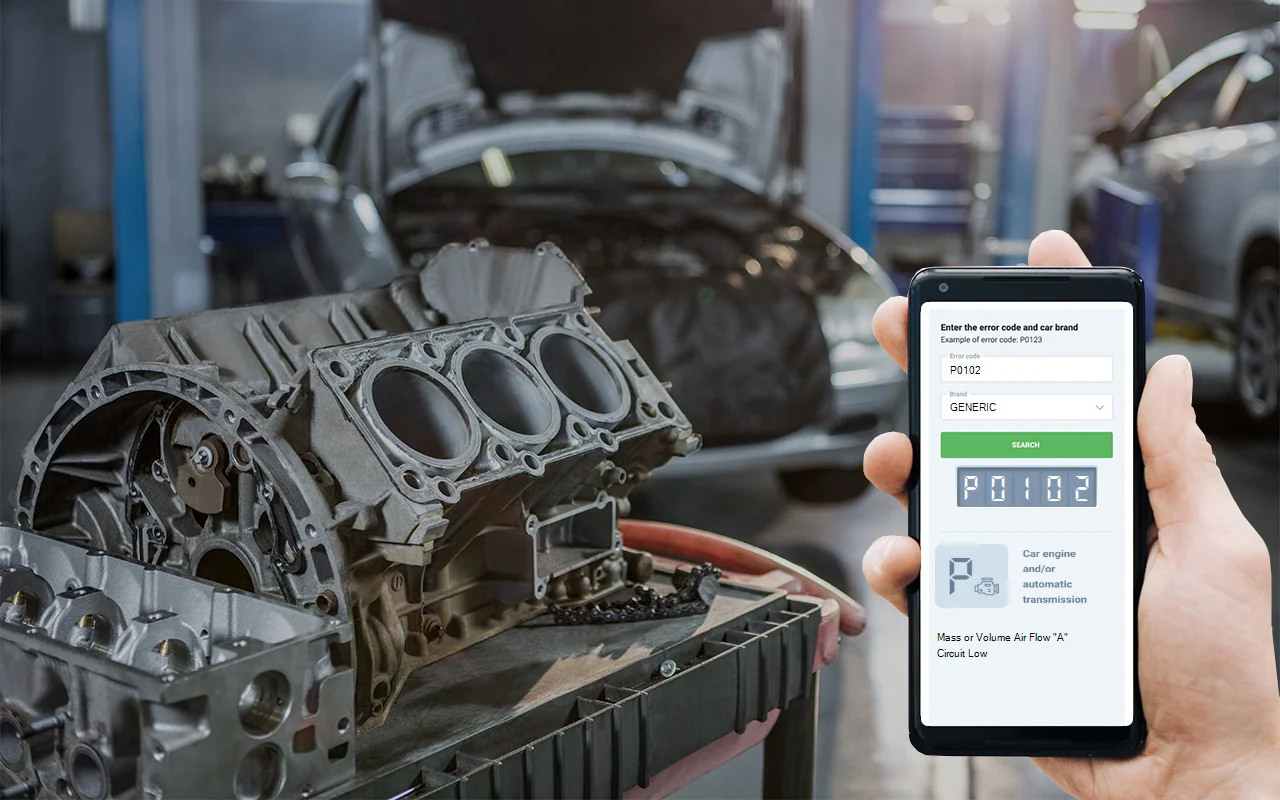When you see a P0102 code pop up, trust me-you’re dealing with a Mass Air Flow (MAF) sensor that isn’t giving your car’s computer the signal it’s expecting. In all the years I’ve spent fixing cars, I’ve found that this little sensor, tucked between the air filter and the throttle body, is one of the unsung heroes of your fuel injection system. Its job? Measuring exactly how much air is heading into your engine. Your ECU relies on that info to get the fuel mix just right. If the sensor’s signal drops lower than it should, your fuel mixture goes sideways, and your car just won’t run right. You’ll notice. Believe me, this is one sensor you don’t want acting up.
DTC P0102
Causes of P0102
From experience, I can tell you that the most common reason for a P0102 code is a dirty or contaminated MAF sensor. Over time, dust and oil can build up on the sensor’s wires or grid, throwing off its readings. Next up is a faulty MAF sensor-sometimes the sensor itself just fails. I’ve also seen plenty of cases where the problem is in the wiring: damaged wires, loose connectors, or corroded terminals can all mess with the signal. Rarely, the issue can be with the car’s computer (PCM/ECM), but that’s not where I’d start. Here’s what I usually check first:
- Dirty or contaminated MAF sensor
- Faulty MAF sensor
- Wiring or connector problems (damaged wires, loose or corroded connections)
- PCM/ECM issues (rare)
Symptoms of P0102 engine code
When this code pops up, you’ll probably notice the check engine light is on. Most folks also report the engine running rough, especially at idle or when accelerating. You might have trouble starting the car, or it could stall unexpectedly. Another big clue is a noticeable drop in engine power-it just feels sluggish and doesn’t respond like it should. If you’re seeing any of these symptoms, it’s time to take action.

Diagnosis and P0102 trouble code
Let me walk you through how I tackle a P0102 code in the shop. First thing I do: open the hood and check the air filter. If it’s packed with dirt or looks like it’s seen better days, swap it out. Then, move on to the MAF sensor itself, which you’ll find right after the air filter box. Take a close look-if you spot grime or oil, remove it gently and clean it with a dedicated MAF sensor cleaner (never regular cleaners, and don’t touch the wires with your fingers). While you’re there, inspect every inch of the wiring harness and connectors. I’ve lost count of how many times I’ve found a loose pin or a corroded terminal causing headaches. Give the wires a little wiggle; if anything’s loose, you’ve probably found your culprit. After all that, plug in a scan tool and watch the MAF sensor readings with the engine running. If the numbers still look off after cleaning, odds are you need a new sensor. Only after ruling out these basics would I start thinking about the PCM/ECM, and that’s a rare one. Be sure to clear the code after repairs and see if it returns. I’ve seen this exact scenario on Toyotas, Chevrolet Silverados, Nissans-you name it, the process is the same.

Common Mistakes with dtc P0102
A classic mistake I see all the time is folks jumping straight to replacing the MAF sensor-don’t do it before cleaning it! Another one? Ignoring the wiring. Broken or corroded connectors can mimic the exact symptoms of a bad sensor, and I’ve seen plenty of techs chase their tails because of it. And don’t forget the air filter; a clogged one can trip you up just as easily. Skipping these simple basics leads to wasted money and frustration. Here’s a pro-tip from the garage: always start with the easy stuff first. For those working on European cars, the eobd dtc p0102 code comes up for the same reasons-dirty sensors, wiring issues, or clogged filters.

Seriousness of obd code P0102
Take it from me-ignoring a P0102 code is asking for trouble. When your MAF sensor isn’t working right, you risk running the engine too rich or too lean, and that’s a recipe for damaging expensive parts like your catalytic converter. If your car stalls or starts losing power at the worst possible moment, safety becomes a real concern. Problems like these don’t fix themselves-in fact, they usually get worse. Address it now, and you’ll save yourself a pile of grief (and cash) later.
Repair Process for P0102 code
When I’m fixing a P0102, I always start with the basics: clean the MAF sensor with the right cleaner, and make sure your air filter isn’t choking on dirt. Nine times out of ten, a good cleaning sorts things out. If not, your next step is a new sensor. Don’t skip inspecting every connector and bit of wiring along the way-repair or replace anything that’s suspect. If you’ve done all this and the code won’t stay gone, then you might have a deeper electrical gremlin or, rarely, an issue with the PCM/ECM. My usual checklist looks like this:
- Clean the MAF sensor with approved cleaner
- Replace the air filter if dirty or clogged
- Repair or replace damaged wiring/connectors
- Replace the MAF sensor if faulty
- Check PCM/ECM only if all else fails
Conclusion
Bottom line? P0102 means your engine isn’t getting the right air flow info, and that can cause all sorts of headaches-from rough running to real safety risks. Don’t put it off. Start simple: clean that sensor, check your air filter, and don’t overlook the wiring. Most of the time, you’ll solve it with a good cleaning or a fresh sensor. Take it step by step, and you’ll have your car running smooth again before you know it. Trust me-fix it now, and you’ll avoid much bigger problems down the road.




